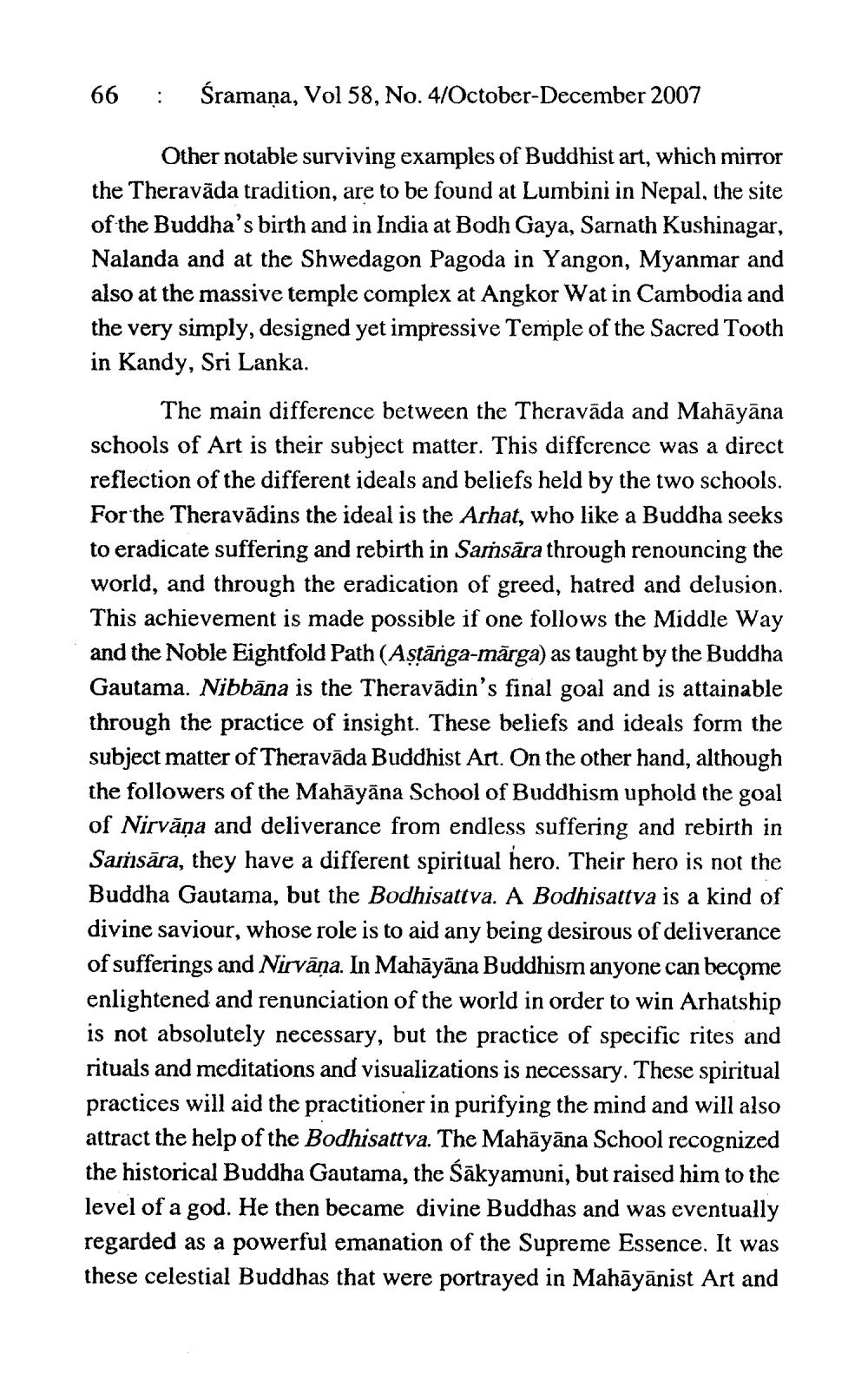________________
66
:
śramaņa, Vol 58, No. 4/October-December 2007
Other notable surviving examples of Buddhist art, which mirror the Theravāda tradition, are to be found at Lumbini in Nepal, the site of the Buddha's birth and in India at Bodh Gaya, Sarnath Kushinagar, Nalanda and at the Shwedagon Pagoda in Yangon, Myanmar and also at the massive temple complex at Angkor Wat in Cambodia and the very simply, designed yet impressive Temple of the Sacred Tooth in Kandy, Sri Lanka.
The main difference between the Theravāda and Mahāyāna schools of Art is their subject matter. This difference was a direct reflection of the different ideals and beliefs held by the two schools. For the Theravādins the ideal is the Arhat, who like a Buddha seeks to eradicate suffering and rebirth in Samsāra through renouncing the world, and through the eradication of greed, hatred and delusion. This achievement is made possible if one follows the Middle Way and the Noble Eightfold Path (Astārga-mārga) as taught by the Buddha Gautama. Nibbāna is the Theravādin's final goal and is attainable through the practice of insight. These beliefs and ideals form the subject matter of Theravāda Buddhist Art. On the other hand, although the followers of the Mahāyāna School of Buddhism uphold the goal of Nirvāṇa and deliverance from endless suffering and rebirth in Samsāra, they have a different spiritual hero. Their hero is not the Buddha Gautama, but the Bodhisattva. A Bodhisattva is a kind of divine saviour, whose role is to aid any being desirous of deliverance of sufferings and Nirvāṇa. In Mahāyāna Buddhism anyone can become enlightened and renunciation of the world in order to win Arhatship is not absolutely necessary, but the practice of specific rites and rituals and meditations and visualizations is necessary. These spiritual practices will aid the practitioner in purifying the mind and will also attract the help of the Bodhisattva. The Mahāyāna School recognized the historical Buddha Gautama, the sākyamuni, but raised him to the level of a god. He then became divine Buddhas and was eventually regarded as a powerful emanation of the Supreme Essence. It was these celestial Buddhas that were portrayed in Mahāyānist Art and




